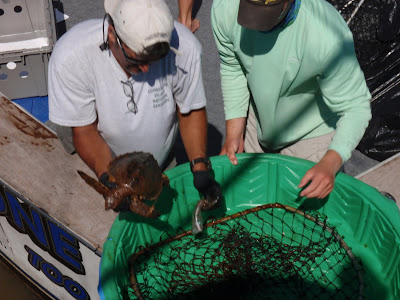In past summers I have been involved in projects ranging from banding young pelicans and terns and watching over sea turtle nests and hatchlings to traveling around the country fighting wildfires. This summer a call for help came from the Gulf of Mexico to assist in the oil leak cleanup effort, and I decided to sign on.

When I arrived in the Gulf I was assigned to the Department of the Interior's Natural Resource Damage Assessment and Restoration (NRDAR) Program. The NRDAR Program's primary mission is "to restore natural resources injured as a result of oil spills and other hazardous substance releases into the environment." My assignment was to conduct shoreline assessments of the marshes in southeast Louisiana's Mississippi River Delta region and document any oil found. The data I collected will be used to help assess any ensuing damage to the marshes caused by the oil.
Most of my days were spent on a boat (typically an airboat since they operate well in shallow water) surveying the marshes for oil and collecting pertinent data. I had never before been to the Mississippi River Delta region, but as I worked it really struck me what a unique, diverse, and important area it is, biologically, ecologically, economically, and culturally. The importance of preserving and protecting this region really hit home.

When my 30-day work detail was over, I decided to wrap things up with a nice weekend of R & R in New Orleans, and particularly the French Quarter (where this wildlife biologist experienced a different kind of "wildlife"... but that’s another story!). Overall, my time in the Gulf certainly was time well spent. It was a great experience I won’t soon forget. -- Ryan








